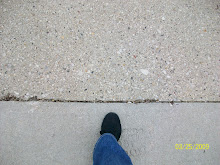Erica Woods
Film 150: Multicultural America
Media Literacy Exercise
February 27, 2009
Operation Assimilation; The American Way!
There are two photos in particular that struck me as correlative towards one another in very interesting ways. They are titled:” Refrigerator” by Osa and Martin Johnson, 1920 and “Receiving Dolls” taken by Toyo Miyatake, 1943.
These two photos capture a brief encounter of the assimilation into American Culture that all people of color have experienced throughout American History.
“Refrigerator”

This picture is very narrow and it seems to provoke the viewer to only focus on the woman in the picture, despite the fact that there are two others in the photo. There is shadow overcast on the two Native Americans and the lighting is centered on the refrigerator and the woman, who is holding an ice tray. Her smile is bright and captured fully, while it seems as if the Native Americans are also smiling, yet the photo was shot only getting a side angle of their smile, instead of a direct pose. It is evident that they are in a kitchen, due to the images of cans sitting above the refrigerator. This photo was taken in 1920, which was during the time where Native Americans were living in poverty, suffering from various diseases and facing devastation due to the fact that they were being forced to migrate onto small reservations after the European settlers came over and took over the land. Neglected by the government, Native Americans had little to no resources such as food, shelter, etc. Concerned American citizens began to realize that the only way to help the Native Americans was to teach them to adopt certain customs, methods of survival of the American people (assimilation) which included using he refrigerator in order to preserve food, instead of the daily hunting that the Native Americans were accustomed to prior to the arrival of the European settlers. This photo was captured in order to illustrate the progress of the Native Americans into the American culture, which manipulates the viewer into thinking that there was a mutual acceptance and willingness to assimilate from the Native Americans, which history proves was not entirely the case.
The second photo “Receiving Dolls” was taken in 1943.

The frame of this photo is a bit wider, the viewer can catch an overall glimpse of the surroundings, and it seems like a nursery. The lighting is very bright, indicating a happy setting, particularly because all of the young girls appear to be smiling. It also very interesting that the girls are standing in a somewhat straight line, which curves in a slight circular motion towards the far right-hand side. This location of this photo is actually an internment camp. Taken in 1943, just a year after the United States forced all Japanese Americans to relocate from their homes due to the war, which created a somewhat uneasy relationship between Japanese aliens and the U.S. Government, which led to the migration of over 100,000 Japanese Americans who lived in states bordering the Pacific Ocean. This photo was taken by the American Friends society, which is an organization of American citizens who step in and help civilian war victims. This organization donated the dolls to the Japanese American girls and represents a re-assimilation process, a year after the Japanese Americans were banned from their homes and placed in these internment camps, they were then still taught to assimilate into the American culture in these structured environments and totally reliant on the U.S. government for housing, Medicare, food, etc.
In conclusion, it is evident that Native and Japanese Americans had to assimilate into the American culture, in order to survive, literally. It was also interesting that in both photos, though taken roughly twenty years a part, both minorities were receiving “gifts”. What does it actually mean to assimilate into “American” culture, how can it be defined? “White patriarchal capitalism, ideas about race and ethnicity are constructed and circulated in ways that tend to keep white privilege and power in place”(Benshoff and Griffin, 51). Giving these dolls to the Japanese girls and the refrigerators to Native Americans, communicates that this is the cultural “norm” and diminishes the basic survival skills that ethnic groups had been using for centuries. It is sort of a way to phase out cultural customs and align under one ideology as people, at the same time assimilation into white culture is viewed as the normal, human experience, a form of cultural invisibility as explained by Benshoff and Griffin, “The White power base maintains its dominant position precisely by being consistently overlooked…unexamined in most mainstream texts”(Benshoff and Griffen, 53). Until America begins to question whiteness as a culture and not an ideology, we are all conforming to some form of assimilation, how can America pride itself on rich culture and diversity with such a monotonous cultural voice? Films help us examine multicultural stereotypes/misconceptions and in time will hopefully celebrate our true, multicultural American people.
Works Cited
2. Marita Sturken & Lisa Cartwright, “Viewers Make Meaning,” Practices of looking: an Introduction to Visual Culture. 2nd ed (New York City: Oxford University Press, Inc, 2001) 49-59.
3. Memorial Hall Museum Online American Centuries...view from New England. 23February2009. Pocumtuck ValleyMemorialAssociation. <http://www.memorialhall.mass.edu/turns/view.jsp?itemid=13161&subthemeid=18>
4. The virtual museum of the city of San Francisco. 22February2009.
< http://www.sfmuseum.org/hist10/relocbook.html>
Pg 45.

Dear Erica,
ReplyDeleteI'm all in favor of a spirited debate about the lives and achievements of pioneering documentary filmmakers Martin and Osa Johnson. But...
The information you have about the "Refrigerator" is incorrect. This photo was taken during the Johnsons' 1935-1936 expedition to Borneo (not 1920 and certainly not the Americas).
Sincerely,
Conrad Froehlich
Director
Martin and Osa Johnson Safari Museum